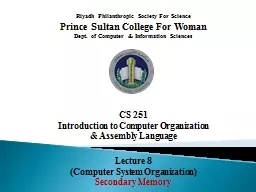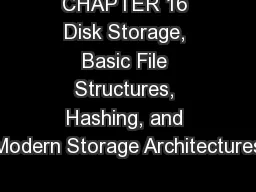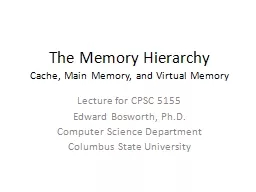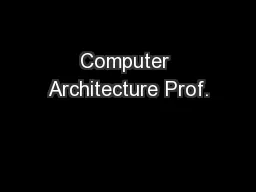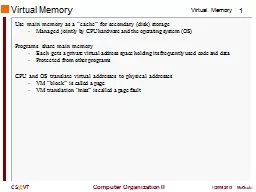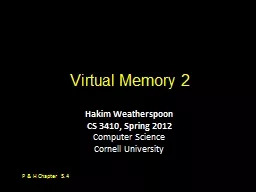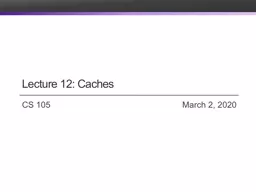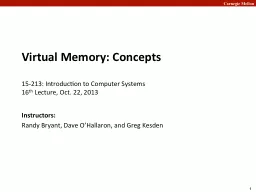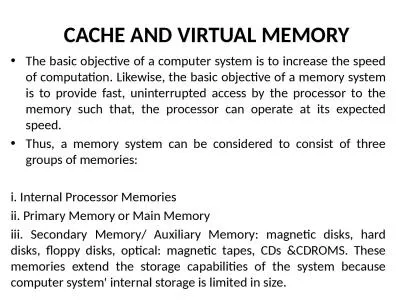PPT-Virtual Memory Use main memory as a “cache” for secondary (disk) storage
Author : phoebe-click | Published Date : 2018-11-03
Managed jointly by CPU hardware and the operating system OS Programs share main memory Each gets a private virtual address space holding its frequently used code
Presentation Embed Code
Download Presentation
Download Presentation The PPT/PDF document "Virtual Memory Use main memory as a “c..." is the property of its rightful owner. Permission is granted to download and print the materials on this website for personal, non-commercial use only, and to display it on your personal computer provided you do not modify the materials and that you retain all copyright notices contained in the materials. By downloading content from our website, you accept the terms of this agreement.
Virtual Memory Use main memory as a “cache” for secondary (disk) storage: Transcript
Download Rules Of Document
"Virtual Memory Use main memory as a “cache” for secondary (disk) storage"The content belongs to its owner. You may download and print it for personal use, without modification, and keep all copyright notices. By downloading, you agree to these terms.
Related Documents


